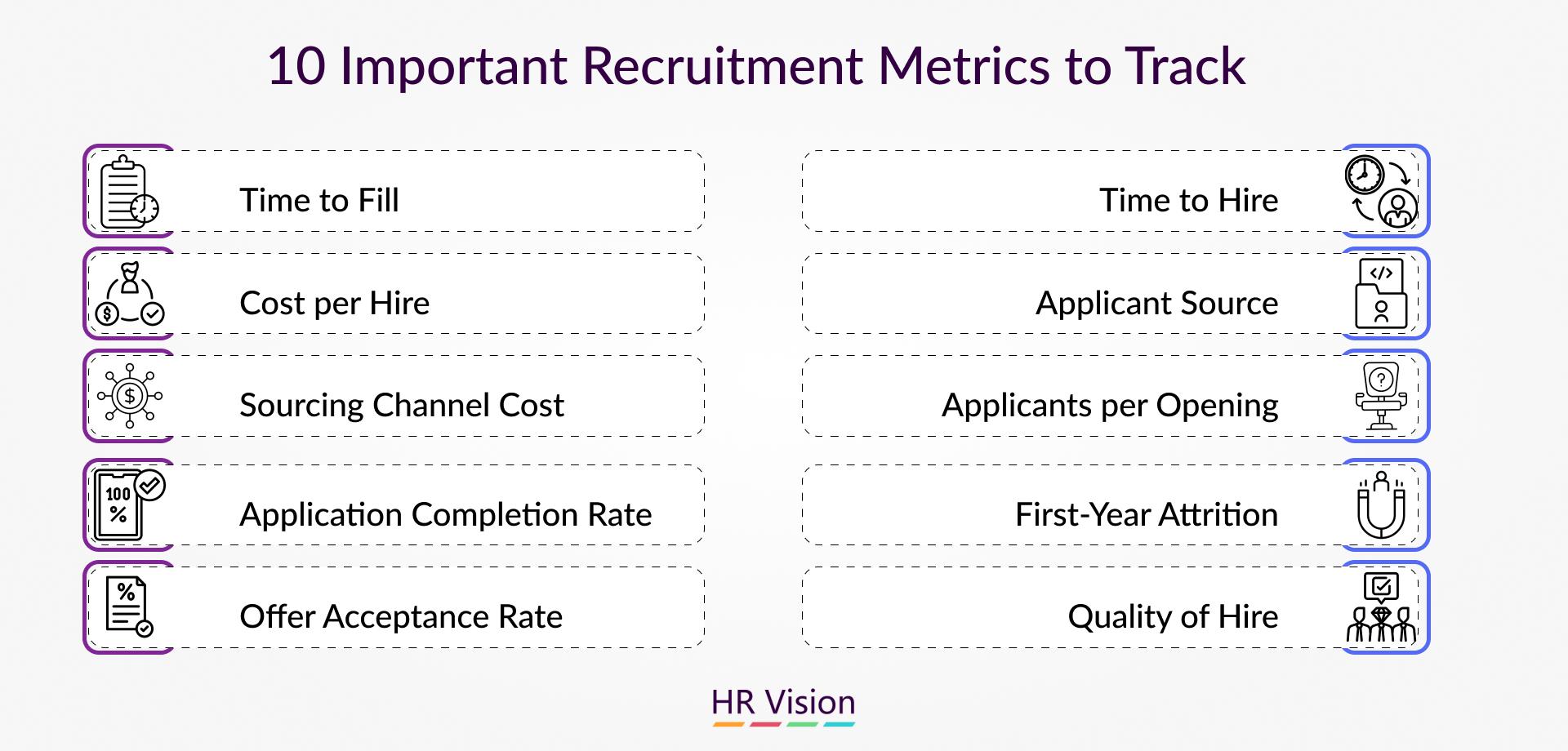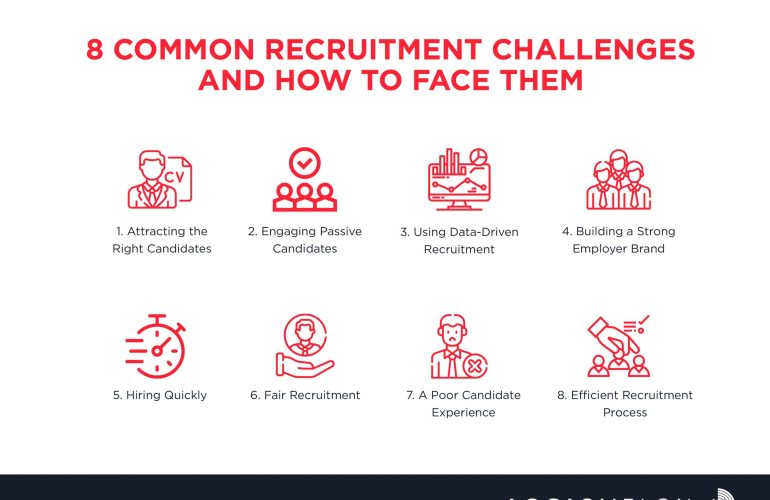In today’s competitive labor market, where attracting and retaining top talent is crucial for organizational success, understanding and measuring recruitment performance has never been more essential. Recruitment metrics serve as vital tools that provide insights into the effectiveness of hiring strategies, enabling businesses to make informed decisions and enhance their talent acquisition processes. This article delves into the fundamental recruitment metrics that every organization should monitor, outlines effective measurement strategies, and examines the profound impact these metrics have on overall business performance. By leveraging data-driven insights, companies can not only optimize their recruitment efforts but also align talent acquisition with broader organizational goals, ensuring a robust and dynamic workforce that drives innovation and growth. Join us as we explore the pivotal role of these metrics in shaping successful hiring practices and fostering a proactive approach to talent management.
Table of Contents
- Essential Recruitment Metrics for Effective Talent Acquisition
- Key Measurement Strategies to Optimize Recruitment Performance
- Analyzing the Impact of Recruitment Metrics on Organizational Success
- Implementing Best Practices for Continuous Improvement in Recruitment Processes
- Insights and Conclusions
Essential Recruitment Metrics for Effective Talent Acquisition
To truly optimize the talent acquisition process, it’s imperative to focus on key recruitment metrics that can provide insights into both efficiency and effectiveness. Time to Fill, for instance, measures the number of days from when a job requisition is opened until an offer is accepted. This metric not only highlights the speed of your recruitment process but also indicates how well the recruiting team is functioning. Additionally, considering the Quality of Hire, which evaluates the performance of new hires based on feedback from managers and retention rates, allows companies to gauge the long-term impact of their recruitment strategies.
Another critical metric is the Candidate Conversion Rate, revealing the percentage of applicants who move from one stage of the hiring process to the next. A low conversion rate may signal potential issues in job descriptions or screening processes that need to be addressed. Furthermore, tracking Cost Per Hire can provide a comprehensive picture of your recruitment expenditures, allowing businesses to either continue investment in successful channels or reevaluate their strategies. Below is a simple table to illustrate how these metrics can be tracked:
| Metric | Description | Importance |
|---|---|---|
| Time to Fill | Days from job opening to offer acceptance | Indicates recruitment efficiency |
| Quality of Hire | Performance & retention evaluation of new hires | Measures long-term recruitment success |
| Candidate Conversion Rate | Percentage of candidates who progress in hiring stages | Highlights recruitment process effectiveness |
| Cost Per Hire | Total recruiting costs divided by number of hires | Tracks recruitment budget efficiency |
Key Measurement Strategies to Optimize Recruitment Performance
To achieve optimal recruitment performance, it is crucial to implement precise measurement strategies that align with organizational goals. Focusing on key performance indicators (KPIs) allows recruitment teams to gather actionable insights. Consider monitoring the following metrics for a holistic view of effectiveness:
- Time to Fill: Analyze the duration from job posting to candidate acceptance.
- Quality of Hire: Evaluate performance ratings of new hires over time.
- Candidate Source Effectiveness: Identify which hiring channels yield the best talent.
Utilizing candidate feedback and engagement levels can further enhance the recruitment process. Integrating advanced analytics tools helps employers understand the candidate experience, ultimately driving better decision-making. Keep a close eye on:
| Metric | Importance |
|---|---|
| Candidate NPS (Net Promoter Score) | Measures candidate satisfaction and advocates for the employer brand. |
| Offer Acceptance Rate | Indicates the effectiveness of the recruitment process and employer appeal. |
| Diversity Metrics | Assesses the inclusivity of the hiring process in attracting diverse talent. |
Analyzing the Impact of Recruitment Metrics on Organizational Success
The collection and analysis of recruitment metrics play a crucial role in shaping organizational success. By systematically measuring various indicators throughout the hiring process, companies can identify trends, optimize strategies, and make data-driven decisions. Key recruitment metrics such as time-to-fill, cost-per-hire, and candidate source effectiveness not only highlight the efficiency of the recruitment team but also reflect on the overall health of the talent acquisition strategy. Utilizing these metrics allows organizations to pinpoint areas needing improvement and to leverage talent more strategically, ensuring alignment with business goals.
Moreover, the impact of these metrics extends beyond simply filling positions; they offer insights into employee retention and engagement levels as well. When organizations monitor metrics like hiring manager satisfaction and new hire performance, they can establish a feedback loop that informs future recruitment tactics. For instance, if a long time-to-fill leads to the loss of top candidates, a company may need to streamline their selection process or enhance candidate experience to improve their hiring outcomes. Here are some important metrics to keep in mind:
- Time-to-Fill: Total number of days to hire a candidate.
- Quality of Hire: Assessment of new hire performance and retention.
- Offer Acceptance Rate: Percentage of job offers accepted.
- Candidate Net Promoter Score (NPS): Measurement of candidate experience satisfaction.
| Metric | Definition | Impact on Success |
|---|---|---|
| Time-to-Fill | Days taken to fill a position | Reduces operational downtime |
| Cost-per-Hire | Total expenses incurred to hire | Optimizes budget allocation |
| Source of Hire | Effectiveness of recruitment channels | Enhances sourcing strategy and ROI |
Implementing Best Practices for Continuous Improvement in Recruitment Processes
To foster an environment of continuous improvement within recruitment processes, organizations should leverage key performance indicators (KPIs) that effectively measure recruitment efficiency and candidate quality. By establishing a robust framework for evaluating success, teams can pinpoint areas for enhancement. Key metrics to monitor may include:
- Time to Hire: Analyzing the average time from job posting to the acceptance of an offer helps identify bottlenecks.
- Quality of Hire: Assessing new hires’ performance and retention rates provides insight into the effectiveness of sourcing strategies.
- Candidate Experience Feedback: Collecting feedback through surveys can help gauge candidates’ perceptions throughout the hiring journey.
Implementing a structured assessment cycle allows organizations to iterate on their recruitment strategies continuously. By conducting regular reviews of recruitment metrics, teams can derive actionable insights. A simple dashboard summarizing this data can facilitate discussions and prompt adaptive strategies. Consider utilizing a table format for clear visibility of metrics over time:
| Metric | Previous Quarter | Current Quarter | Change (%) |
|---|---|---|---|
| Time to Hire | 30 days | 25 days | -16.67% |
| Quality of Hire | 80% | 85% | +6.25% |
| Candidate Experience Score | 3.5/5 | 4.2/5 | +20% |
Insights and Conclusions
the strategic implementation of essential recruitment metrics is not merely a best practice; it is a vital component in enhancing the overall effectiveness of talent acquisition processes. By systematically measuring and analyzing key performance indicators, organizations can gain invaluable insights into their recruitment strategies, enabling them to make data-driven decisions that align with their business goals.
Moreover, a robust measurement framework empowers HR professionals to identify strengths, uncover areas for improvement, and ultimately streamline the hiring process. As we navigate an ever-evolving workforce landscape, the ability to harness recruitment metrics will distinguish successful organizations from their competitors.
Investing time and resources into understanding and applying these metrics will not only drive better talent outcomes but will also foster a culture of continuous improvement and strategic alignment within teams. As you embark on this measurement journey, let the data guide you toward more effective recruitment strategies and, ultimately, the establishment of a high-performing workforce that propels your organization forward.






